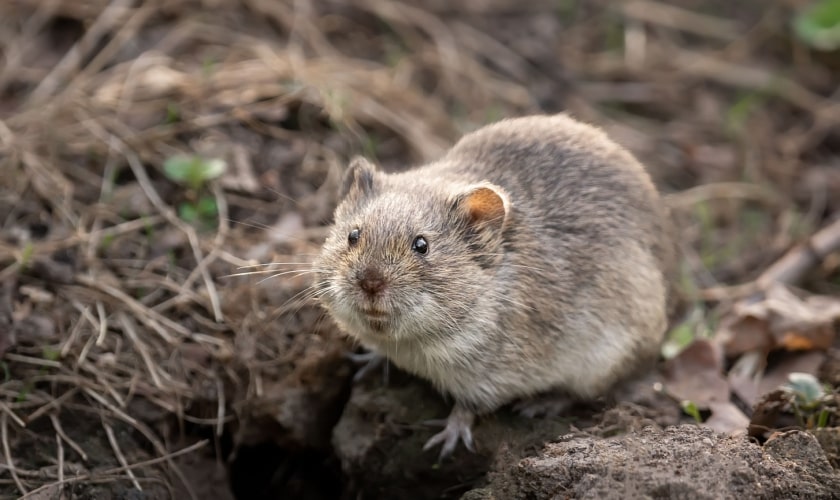Professional Approaches for Vole Control and Prevention
Professional Approaches for Vole Control and Prevention
Blog Article
Comprehensive Guide to Efficient Vole Pest Control: Problem Identification and Treatment Approaches
In the realm of effective bug control, vole invasions position an unique difficulty that demands a strategic approach. By exploring the nuances of vole behavior, understanding key indicators of problem, and examining a variety of control options, one can establish a thorough approach to combat these evasive insects.
Understanding Vole Habits
Vole habits is characterized by their tunneling habits and rapid recreation rates, making them a difficult insect to control properly. These small rats typically develop intricate tunnel systems underground, using them for sanctuary, food storage, and transport. Voles are herbivores, consuming a range of plants, yards, origins, and bulbs, which can create significant damage to gardens, orchards, and yards. Their fast reproductive rate more makes complex control initiatives, with ladies with the ability of creating several trashes in a solitary year, each containing several offspring.
Understanding vole actions is important for efficient insect control strategies. By recognizing their burrow areas, checking feeding locations, and applying targeted control approaches, such as capturing or habitat alteration, vole problems can be taken care of successfully.
Indications of Vole Problem

Avoidance Strategies
Executing effective prevention techniques is essential in reducing vole infestations and safeguarding plant life from their devastating feeding habits (vole lawn damage). To stop vole invasions, it is crucial to start by getting rid of potential food resources and shelter. Maintain grass and greenery trimmed short, get rid of weeds and debris, and maintain a neat garden or yard to make the area much less attractive to voles. Mounting obstacles such as equipment towel or underground fencing can additionally help hinder voles from entering details locations. In addition, minimizing excess moisture by taking care of leaking pipes and making certain correct water drainage can make the atmosphere much less friendly for voles.
Routinely inspecting the home for indicators of vole task, such as paths and burrow openings, is vital for very early discovery and punctual action. If vole task is thought, take into consideration using repellents additional reading or traps strategically positioned near their pathways.
Non-Lethal Control Techniques
To properly handle vole populations while prioritizing humane approaches, non-lethal control methods provide functional options for reducing vole damages in yards and landscapes. One effective technique is the use of physical barriers such as hardware fabric or wire mesh to secure vulnerable plants. These barriers can be hidden at the very least 12 inches curved and deep at a 90-degree angle to prevent voles from delving underneath. Furthermore, environment modification can hinder voles by minimizing their favored food sources and concealing places. Maintaining a well-mowed grass, getting rid of particles, and keeping plant life trimmed can make the environment less attractive to anonymous voles.

Lethal Control Options
One effective technique for attending to vole infestations in landscapes and gardens entails the critical use of dangerous control choices. When faced with an extreme vole problem that non-lethal methods have actually stopped working to contain, applying dangerous control procedures becomes crucial. Generally, when employing lethal control alternatives, it is important to do so sensibly and in accordance with neighborhood policies to properly handle vole infestations.
Final Thought
In verdict, reliable vole pest control requires a detailed understanding of vole behavior, recognition of signs of problem, application of avoidance approaches, and usage of both non-lethal and dangerous control approaches. By combining these methods, people can effectively manage vole populations and safeguard their home from damages. It is necessary to attend to vole invasions without delay to prevent more concerns and minimize the impact on the surrounding environment.
Offered the intricate tunnel systems and rapid reproduction prices particular of voles, identifying the indicators of vole problem comes to be vital in reliable parasite control. One of the key indications of vole existence is the existence of surface area runways or trails in grass or snow, commonly about 1-2 inches wide, developed as voles take a trip between their burrows and food resources.To properly handle vole populations while prioritizing humane methods, non-lethal control techniques use here useful services for lowering vole damage in yards and landscapes.One reliable method for dealing with vole infestations in landscapes and yards entails the strategic use of lethal control options. vole yard damage.In conclusion, effective vole pest control needs a thorough understanding of vole habits, identification of indications of problem, application of avoidance methods, and utilization of both dangerous and non-lethal control methods
Report this page